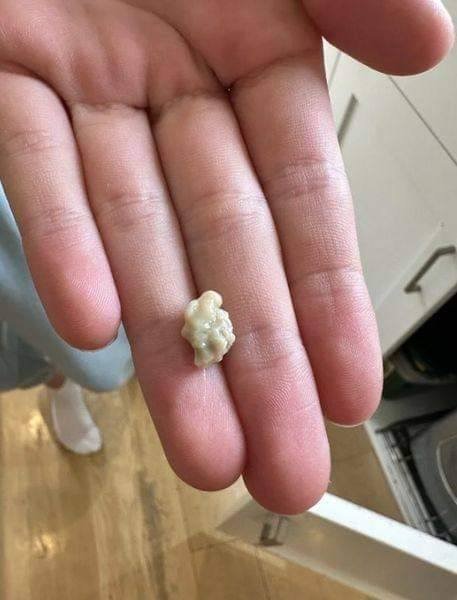ADVERTISEMENT
Tonsil Stones: Causes, Symptoms, and Natural Remedies
Tonsil stones, also known as tonsilloliths, are small, calcified lumps that form in the crevices of your tonsils. While they are generally harmless, they can cause discomfort and embarrassment. Many people may not even know they have tonsil stones, as they can sometimes go unnoticed or cause only mild symptoms. However, in other cases, they can be bothersome and even lead to bad breath, sore throat, or difficulty swallowing.
In this article, we’ll explore what tonsil stones are, what causes them, the symptoms you should look out for, and how to treat and prevent them naturally.
What Are Tonsil Stones?
Tonsil stones are small, hardened deposits that form within the folds or crypts of the tonsils. They consist of bacteria, dead cells, mucus, food particles, and other debris that become trapped and calcify over time. As these materials accumulate, they create a solid mass that can range in size from a tiny speck to a large, noticeable lump.
The tonsils, located at the back of your throat, are part of the lymphatic system and help fight infections. They are made up of tissue with tiny crevices that can trap debris. While tonsil stones are often small and benign, they can cause issues when they grow larger or become infected.
Causes of Tonsil Stones
Tonsil stones are primarily caused by the accumulation of debris in the tonsil crypts. The following factors contribute to their formation:
- Poor Oral Hygiene: Inadequate brushing and flossing can allow bacteria, food particles, and dead cells to build up in the mouth and tonsils, increasing the likelihood of tonsil stone formation.
- Chronic Tonsillitis: People who experience frequent throat infections or inflammation in the tonsils may be more prone to developing tonsil stones. Inflammation can cause the tonsils to swell and create more crevices, where debris can get trapped.
- Large Tonsils: Some people have larger tonsils with deeper crevices, providing more space for debris to accumulate and form tonsil stones.
- Post-Nasal Drip: Mucus from sinus issues or allergies can drip down the back of the throat and get trapped in the tonsils, contributing to stone formation.
- Dehydration: Not drinking enough water can lead to a dry mouth, which promotes the accumulation of bacteria and other debris in the mouth and tonsils.
- Diet: Diets rich in dairy products, which can thicken mucus, may contribute to the development of tonsil stones in some individuals.
Symptoms of Tonsil Stones
Many people with tonsil stones do not experience noticeable symptoms, but when they do occur, the following signs may be present:
- Bad Breath (Halitosis): The most common symptom of tonsil stones is bad breath. The bacteria that form around the stones produce sulfur compounds, which can lead to a foul odor in the mouth.
- Sore Throat: Tonsil stones may cause irritation or discomfort in the throat, leading to a sore throat that can be persistent.
- Difficulty Swallowing: Larger tonsil stones can make swallowing uncomfortable or painful, especially if the stones are located in the deeper folds of the tonsils.
- Ear Pain: Some people may experience referred pain in the ears, as the nerves in the throat and ears are interconnected.
- Visible White or Yellowish Lumps: In some cases, tonsil stones can be seen on the tonsils. They may appear as small, white or yellowish lumps.
- Frequent Throat Clearing: People with tonsil stones may feel the need to clear their throat constantly due to the sensation of something being stuck in the back of the throat.
- Tonsil Swelling: The tonsils may appear swollen or red, particularly if the tonsil stones are causing irritation or inflammation.
For Complete Cooking STEPS Please Head On Over To Next Page Or Open button (>) and don’t forget to SHARE with your Facebook friends
ADVERTISEMENT
ADVERTISEMENT
